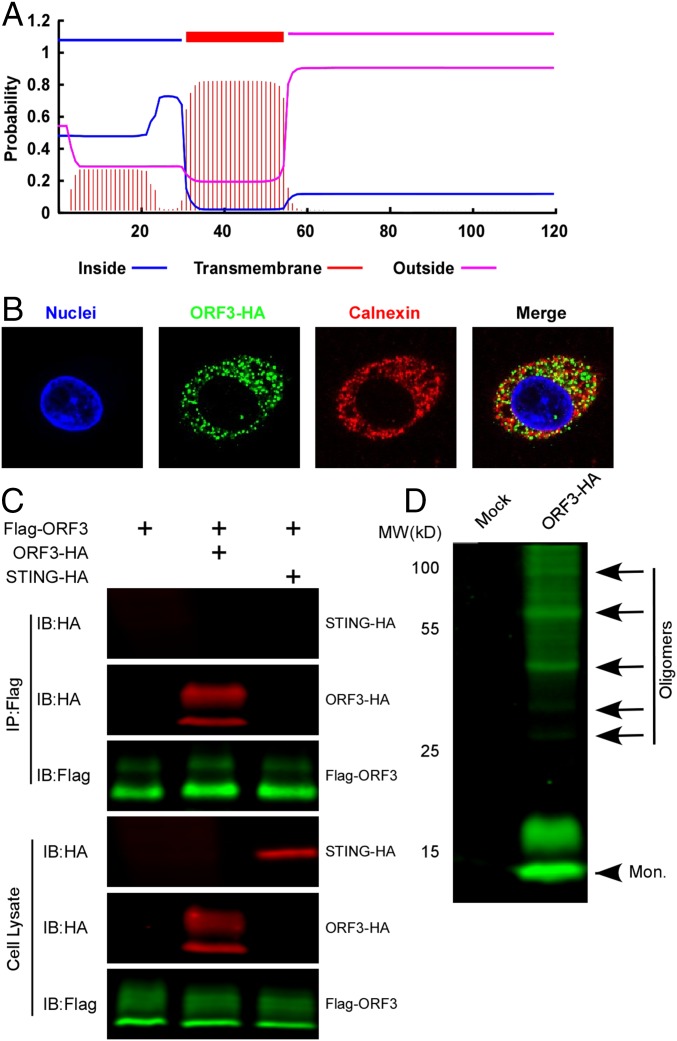Fig. 1.
ORF3 is a predicted transmembrane protein that associates with ER membranes and can form homooligomers. (A) Schematic representation of the predicted transmembrane topology [TMHMM (transmembrane helices in proteins) Server v. 2.0] of HEV ORF3 protein (Kernow C1/p6). (B) HEV ORF3 protein associates with the ER membrane. HepG2C3A cells lentivirally transduced with HEV ORF3-HA were stained with anti-HA and anti-calnexin antibodies. Nuclei were stained with Hoechst dye. Colocalization was analyzed by ImageJ, and Pearson's r = 0.44 ± 0.063. Shown are representative images of at least triplicate experiments. (C) Coimmunoprecipitation assay of FLAG-ORF3 and ORF3-HA or STING-HA in HepG2C3A cells. Cells were transduced with FLAG-ORF3 and/or ORF3-HA or HA-STING lentivirus and lysed 72 h posttransduction. Cell lysates were subjected to immunoprecipitation with an anti-FLAG antibody. IP, immunoprecipitation; IB, immunoblotting. (D) The cell lysates from cells lentivirally transduced to express ORF3-HA or mock transduced were analyzed by Western blotting with an anti-HA antibody. The monomer and oligomers are indicated with arrowhead and arrows, respectively.

